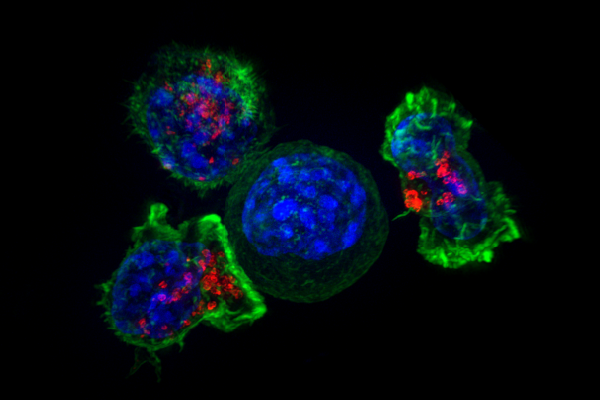
Researchers at the Francis Crick Institute have uncovered how cancer cells protect themselves from viruses that are harmful to tumors but not to healthy cells. These findings could lead to improved viral treatments for the disease.
In their study, published in Nature Cell Biology, the researchers identified a mechanism that protects cancer cells from oncolytic viruses, which preferentially infect and kill cancer cells.
These viruses are sometimes used as a treatment to destroy cancer cells and stimulate an immune response against the tumor. However, they only work in a minority of patients and the reasons whether they are effective or not are not yet fully understood.
The team examined the environment surrounding a tumor and how cancer cells interact with their neighbors, in particular, cancer-associated fibroblasts (CAFs), which researchers know play a significant role in cancer protection, growth and spread.
They found that when cancer cells are in direct contact with CAFs, this leads to inflammation that can alert the surrounding tissue, making it harder for viruses to invade and replicate within the cancer cell.
This protective inflammatory response occurs when cancer cells pass small amounts of cytoplasm, the fluid in their cells, through to the CAFs. This triggers the fibroblasts to signal to nearby cells to release cytokines, molecules that cause inflammation.
Erik Sahai, paper author and group leader of the Tumor Cell Biology Laboratory at the Crick says: “This process only occurs when cancer cells and fibroblasts are in direct contact with each other. In healthy tissue, this type of inflammatory response would only happen during injury, as there is usually a membrane keeping them apart.
“This is an excellent example of the way cancer hijacks our body’s protective mechanisms for its own gain.”
Importantly, when the researchers blocked the signaling pathway in cell cultures and in tumors grown in the laboratory, they found that the cancer cells became more sensitive to oncolytic viruses.
They hope these findings may, in the future, help to develop a treatment that could modulate the inflammation and so help oncolytic viruses to more effectively target cancer cells.
Emma Milford, co-lead author and Phd student in the Tumor Cell Biology Laboratory at the Crick says: “If we can more fully understand how cancer cells protect themselves from oncolytic viruses and find effective ways to stop these protective mechanisms, these viruses could become a more powerful tool doctors can use to treat cancer. This research is an important, early step towards this.”
Antonio Rullan, co-lead author and clinical research fellow in the Tumor Cell Biology Laboratory at the Crick adds: “These viruses prefer to target cancer cells over healthy cells, which has made them of interest for scientists over the last few decades. However, much more remains to be understood about how they interact with tumors and the immune system.”
Source: Read Full Article
